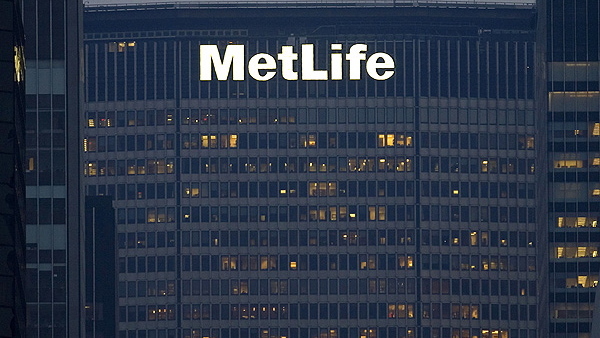By Peter J. Wallison.

For years, Congress has been trying to determine whether the Financial Stability Oversight Council is recognizing legitimate risks to the economy when it designates large financial firms as systemically important financial institutions. Now, thanks to MetLife’s legal challenge to its designation as a SIFI, Congress has an answer: The FSOC had no credible metrics or data to support its designation of MetLife.
The sponsors of the 2010 Dodd-Frank Act created the council in the belief that the failure of Lehman Brothers in September 2008 caused the financial crisis. The council’s 10 voting members—all heads of federal financial regulatory agencies—are charged with identifying other companies whose failure could cause another financial crisis. Firms designated as SIFIs are turned over to the Federal Reserve for what Dodd-Frank calls “stringent” regulation.
In reality, Lehman’s role in the crisis is questionable. There was chaos after it failed, but this was due to the government’s sudden reversal of the policy it established six months earlier with the rescue of Bear Stearns. That reversal upended the expectations of market participants; they sought and hoarded cash, creating the liquidity shortage we know as the financial crisis.
Yet no large financial firms failed as a result of Lehman’s bankruptcy. This means there is no real evidence for the widely held idea that large financial institutions are so interconnected that the failure of one will drag down others. Although this undermines the rationale for the SIFI designation process, the metrics the FSOC uses to show dangerous interconnections have never been disclosed.
FSOC regulations outline two principal ways that the distress or failure of a firm could cause instability in the financial system as a whole. One is by causing losses to others financially exposed to the failing firm, say by holding its debt securities. This is called the exposure channel. The other is by a “fire sale” liquidation of assets that drives down asset prices and thus weakens other firms holding the same assets. It’s called the liquidation channel.
In January, MetLife, the nation’s largest insurer, challenged its designation as a SIFI in federal court. Its brief for summary judgment, filed on June 16, demolishes the idea that the FSOC designated MetLife because of dangers posed by MetLife through either channel.
In addressing the exposure channel, Met Life submitted evidence showing that even its total collapse would not pose a threat to other large firms. For example, in the unlikely event that the largest U.S. banks were to lose 100% of their exposure to MetLife, their losses would not exceed 2% of their capital. By comparison the fines recently levied on the largest U.S. banks by the Justice Department were four times as large. Yet those fines had no observable effect on the health of the banks involved.
As for the liquidation channel, a study done for MetLife by Oliver Wyman showed that even in the implausible event that all policyholders were to surrender their policies and ask for return of their cash values—and all other MetLife liabilities that could accelerate would immediately become due—the firm could still liquidate enough assets to cover its liabilities “without causing price impacts that would substantially disrupt financial markets.” The FSOC produced no data to contradict this evidence. Instead, it merely asserted that these assets sales “could” have an adverse effect on the broader economy.
The facts in MetLife’s brief raise some broad policy questions:
First, why, despite the apparent lack of evidence to support its case, did the FSOC designate MetLife as systemically important? I have written in these pages, and some members of Congress have also observed, that the actions of the council mirror the decisions of the Financial Stability Board (FSB), a mostly European group of central bankers and finance ministers of which the U.S. Treasury and the Fed are members. The FSB designated MetLife as a “global” SIFI in July 2013, without disclosing any of its evidence for doing so. The MetLife designation adds weight to the idea that the FSOC considers itself bound by the prior FSB decisions in which the Treasury and Fed concurred.
Second, although there have been three other nonbank SIFI designations—GE Capital, AIG and Prudential Insurance—MetLife’s brief is the first public disclosure of the data the FSOC used. If the interconnections and exposures between large financial firms are so limited that the failure of one will not seriously impair the safety and soundness of others, the rationale for designating particular firms as systemically important is unclear. A SIFI designation, in effect, is a government declaration that a firm is too big to fail—and subjecting firms to pointless designations and onerous regulations cannot be beneficial to the U.S. economy.
Now that we know the weakness of the FSOC’s data, Congress should consider whether the SIFI designation process makes sense. It should not leave the answer to an unaccountable organization of financial regulators.


